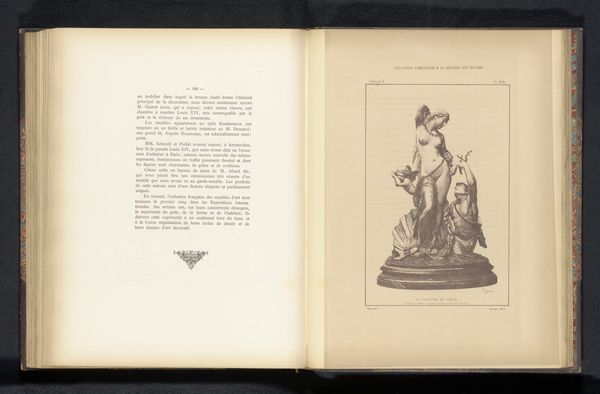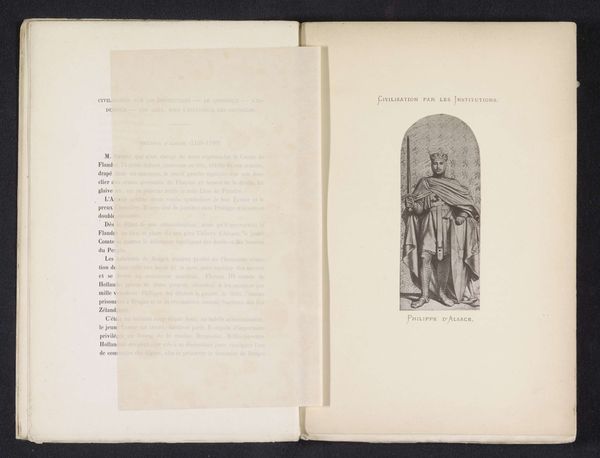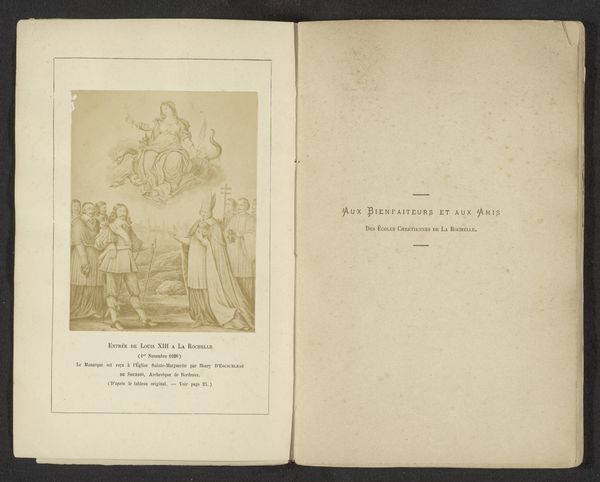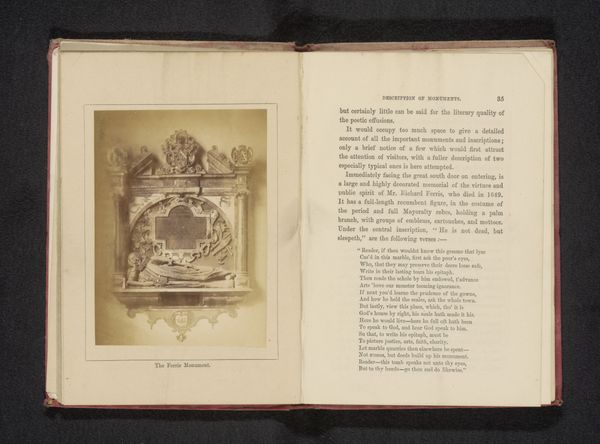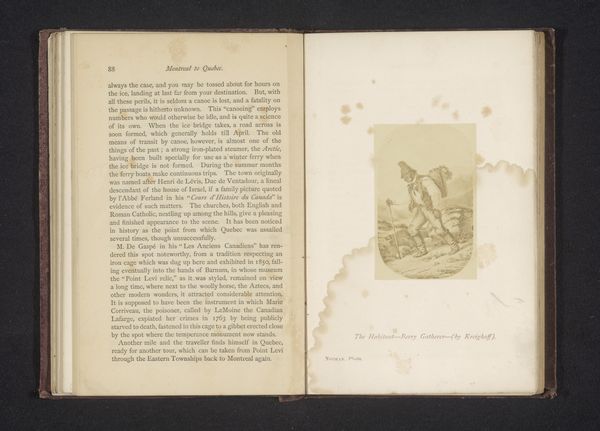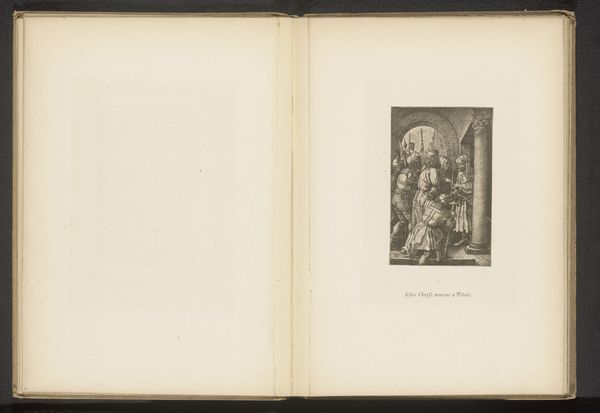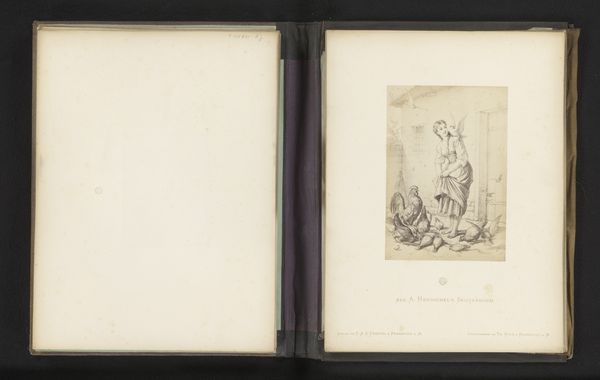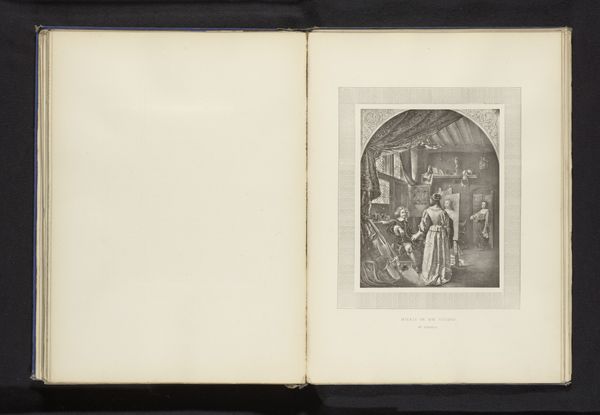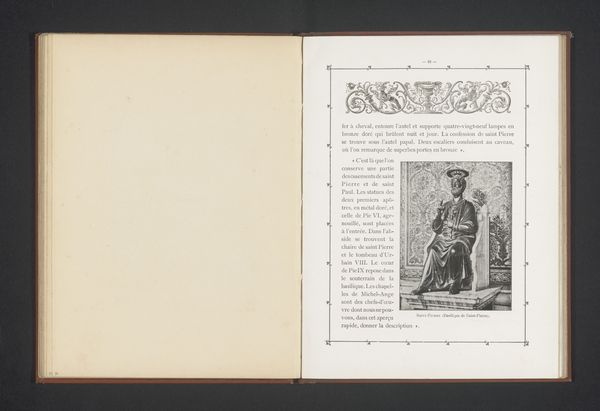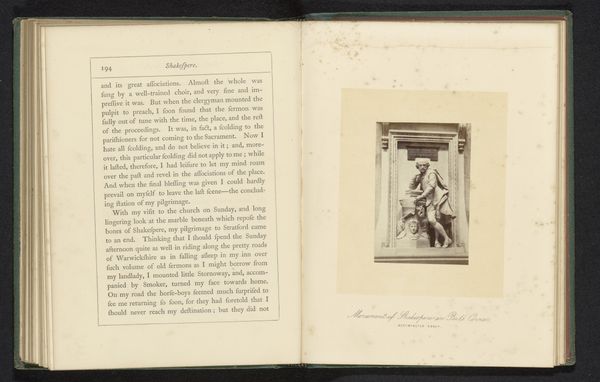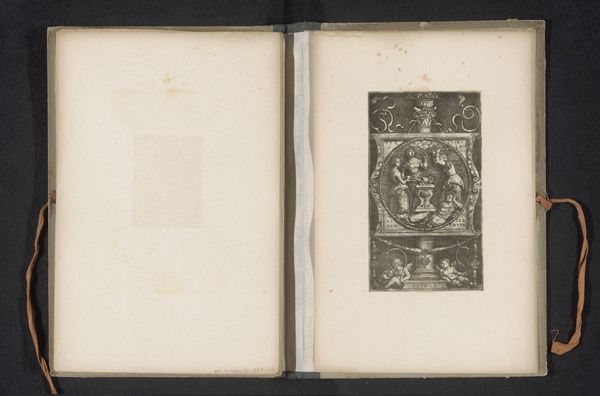
drawing, print, paper, engraving
#
portrait
#
drawing
#
medieval
# print
#
paper
#
history-painting
#
engraving
Dimensions: height 146 mm, width 112 mm
Copyright: Rijks Museum: Open Domain
Curator: Before us is an engraving, believed to have been created before 1896 by Joseph Casier, titled "Borduurpatroon voor op een banier, afgebeeld Sint Eligius". The direct translation is "Embroidery Pattern for a Banner, Depicting Saint Eligius." Editor: It possesses an austere and dignified air, rendered with a clear, almost didactic line. The composition is strikingly simple. What can you tell me about the subject? Curator: Well, historically, Saint Eligius, or Saint Eloi, was a prominent figure – a patron saint of metalworkers and other craftsmen. The historical record paints him as a skilled goldsmith who later became a bishop, known for his piety and charity. His story intersects with the narratives of power and faith within the medieval period. Editor: Yes, and this brings me to the composition. Observe how he is enthroned, hieratic, framed by these symbols of status, fleur-de-lis in a pointed oval that lend a pointed gravity. What might seem simple reveals a visual complexity of how images participate in constructing notions of power and status through relatively direct and explicit compositional strategies. Curator: And let's think about this engraving as a pattern, specifically intended for embroidery on a banner. In the context of medieval craft guilds, the banner serves as a public symbol, representing the identity and values of the guild. By embroidering the image of their patron saint onto it, they imbue it with a sense of historical legitimacy. Editor: But consider this more practically: how do these formal choices -- the high contrast areas, sharp lines -- create legibility from a distance? How do those design qualities invite the artisanal gesture? One sees it less as portraiture and more as encoded structure. Curator: I'd argue, it’s an active form of historical preservation that extends into their lived world. The guilds affirmed their link to both saintly virtues and historical narratives by physically embodying this engraving. It's a continuous, evolving dialogue with the past, manifested in thread. Editor: Perhaps so, though I find it also to be a fascinatingly reduced form, a distilling of recognizable tropes for easy translation into another medium. A visual schema meant for faithful, repetitive iteration. Curator: Ultimately, our perspectives show us different points about how a historical period invests meaning in visual symbols through physical objects and the act of re-creation, whether understood as preservation, iteration, or something in between. Editor: Agreed, a satisfying meeting of lines, histories and interpretive vectors.
Comments
No comments
Be the first to comment and join the conversation on the ultimate creative platform.


